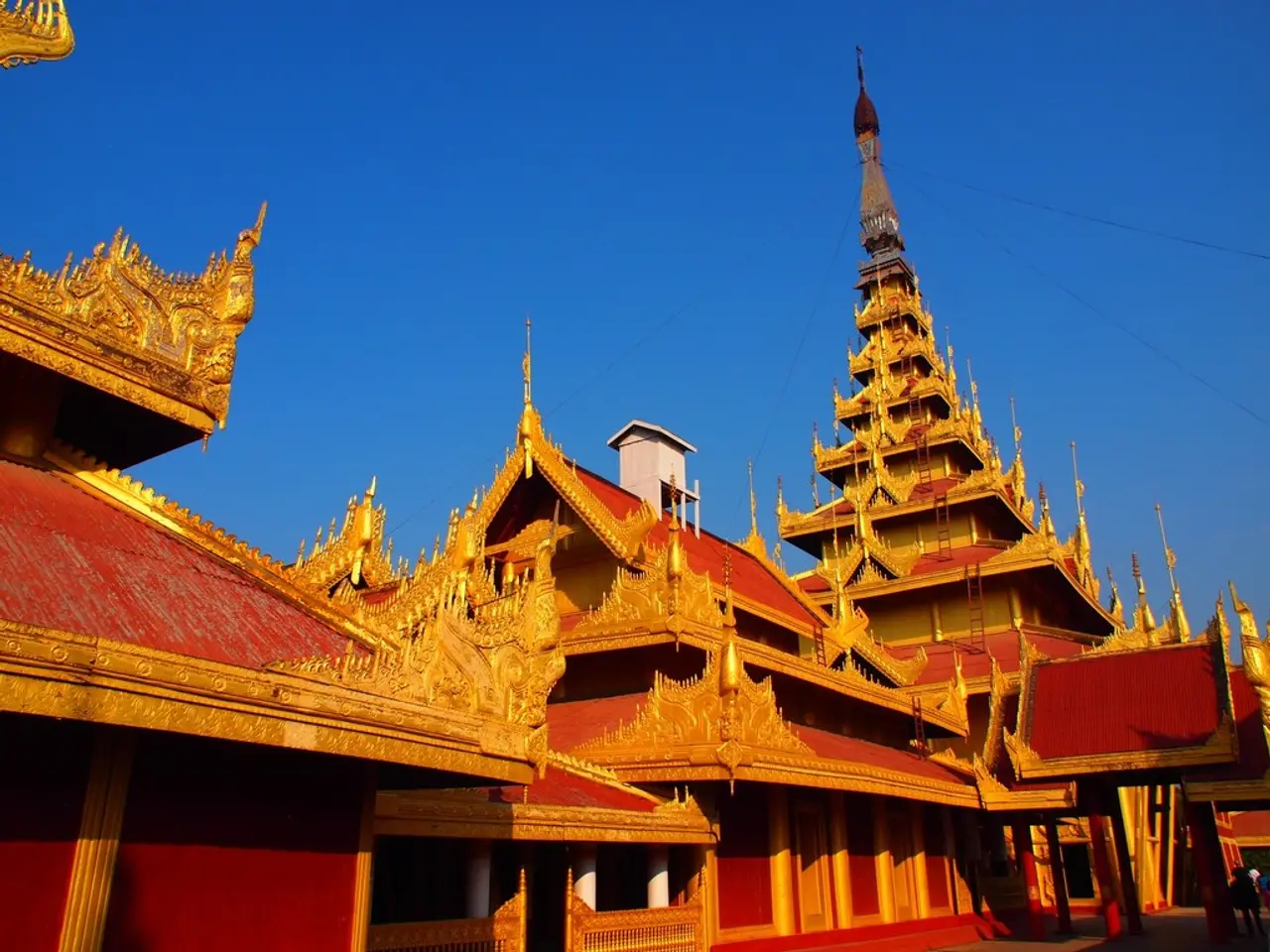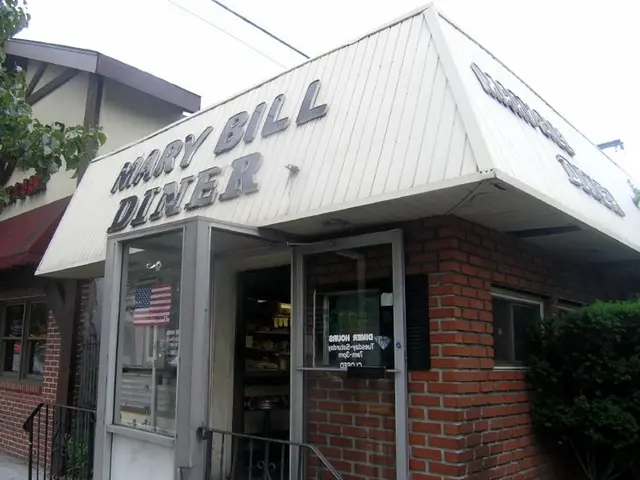Unraveling the resurgence of Rajshahi Silk: Can this ancient craft regain its former luster?
Reviving Rajshahi's Silk Empire: A Journey Through History and Challenges
Rajshahi, a city in northwestern Bangladesh, once held a prominent position in the global silk industry. British records from the late 1700s highlight Rajshahi's dominance in silk production, making it a global epicentre of this luxurious trade [1]. The historic Rajshahi Silk factory, with its 19 power looms, has produced over 53,000 metres of fabric, a testament to the city's rich silk heritage [2].
The life cycle of silk is rooted in the domesticated silkworm, Bombyx mori. These creatures feed on mulberry leaves, four times a day, before spinning their cocoons using a sticky liquid secreted from glands near their mouths [3]. The cocoons are then boiled or steamed to soften the sericin and kill the pupa, resulting in raw silk threads [4]. It takes roughly 5,000 cocoons to make a single saree and over 2,500 for a men's silk shirt [5].
However, the Rajshahi silk industry is currently struggling. Partition in 1947 and subsequent migration of skilled artisans and sericulture experts led to the unravelling of Rajshahi's silk empire [6]. Today, fewer farmers and quieter looms characterise the industry, with widespread counterfeit silk products undermining its reputation [1]. Inadequate utility services, such as irregular electricity supply and lack of reliable gas connections, further hinder production efficiency [2].
Potential solutions to revive the industry include government and private sector investment to upgrade infrastructure and utility services, ensuring stable electricity and gas supply for factories [2]. Protection of domestic industries through policy support is also crucial to safeguard Rajshahi silk from counterfeit competition and preserve brand integrity [3]. Developing skilled manpower and innovation in silk production techniques can improve quality and competitiveness, leveraging lessons from other labor-intensive industries in Bangladesh [4]. Promoting the ‘Silky Rajshahi’ brand can enhance market visibility, acknowledging the sector’s large employment impact, including over 100,000 people involved and 14,000 women workers [5].
Addressing these challenges with a combined focus on infrastructure, policy protection, skilled labor development, and brand promotion could help Rajshahi silk reclaim its lost glory and sustain its pivotal role in Bangladesh’s economy [1][2][3][4][5]. The Bangladesh Sericulture Development Board operates the Silk Factory and Display Centre, the only place where you can buy authentic, handwoven silk products [7].
The history of Rajshahi silk stretches back centuries, interwoven with the economic, political, and cultural fabric of Bengal. From the bustling silk trading center at Kasimbazar in the 17th century, where European traders jostled for a stake in Bengal's luxurious silk trade [1], to Boalia (now Rajshahi city), which became North Bengal's nerve center for silk trade, with the Dutch building the Boro Kuthi for silk trade [8], Rajshahi's silk industry has played a significant role in the region's history.
Despite the challenges, the process of turning a leaf into luxury silk remains a marvel of nature paired with painstaking human care. Average monthly sales at the Rajshahi Silk factory range between Tk 2 and 2.5 lakh [9]. Much of what is sold elsewhere under the name "Rajshahi Silk" is actually imported and lacks the authenticity of the real product [10]. However, with the right measures in place, Rajshahi's silk industry could once again shine bright, weaving its way back into the global textile market.
References: [1] Khan, M. A. (2016). Rajshahi Silk: A Glorious Past and a Challenging Present. The Daily Star. [2] Hossain, M. A. (2019). Rajshahi Silk: A Struggling Industry in Need of Revival. The Financial Express. [3] Islam, M. S. (2018). Protecting Domestic Industries: The Case of Rajshahi Silk. The Dhaka Tribune. [4] Ahmed, S. (2020). Skilled Manpower Development: Key to Rajshahi Silk's Revival. The New Age. [5] Siddique, M. (2019). Promoting ‘Silky Rajshahi’: A Branding Strategy for Revival. The Business Standard. [6] Hossain, M. A. (2017). The Unravelling of Rajshahi's Silk Empire: Partition and Its Aftermath. The Independent. [7] Bangladesh Sericulture Development Board. (n.d.). The Silk Factory and Display Centre. Retrieved from https://bangladeshsilk.gov.bd/ [8] Bhattacharya, S. (2009). The Dutch in Bengal: The Boro Kuthi and the Dutch East India Company. The Asian Review. [9] Anonymous. (2018). Rajshahi Silk Factory: A Glimpse into the Past and the Present. The Rajshahi City Corporation. [10] Hossain, M. A. (2020). The Counterfeit Silk Menace: A Threat to Rajshahi's Silk Industry. The Daily Observer.
Rajshahi's silk industry, once a global leader in fashion-and-beauty, could be revitalized by implementing improvements in home-and-garden, such as ensuring stable utility services and upgrading infrastructure. By preserving the rich heritage of Rajshahi silk and promoting the 'Silky Rajshahi' brand, the region's desire to excel in lifestyle industries may find renewed success.




